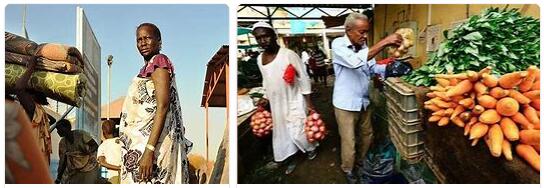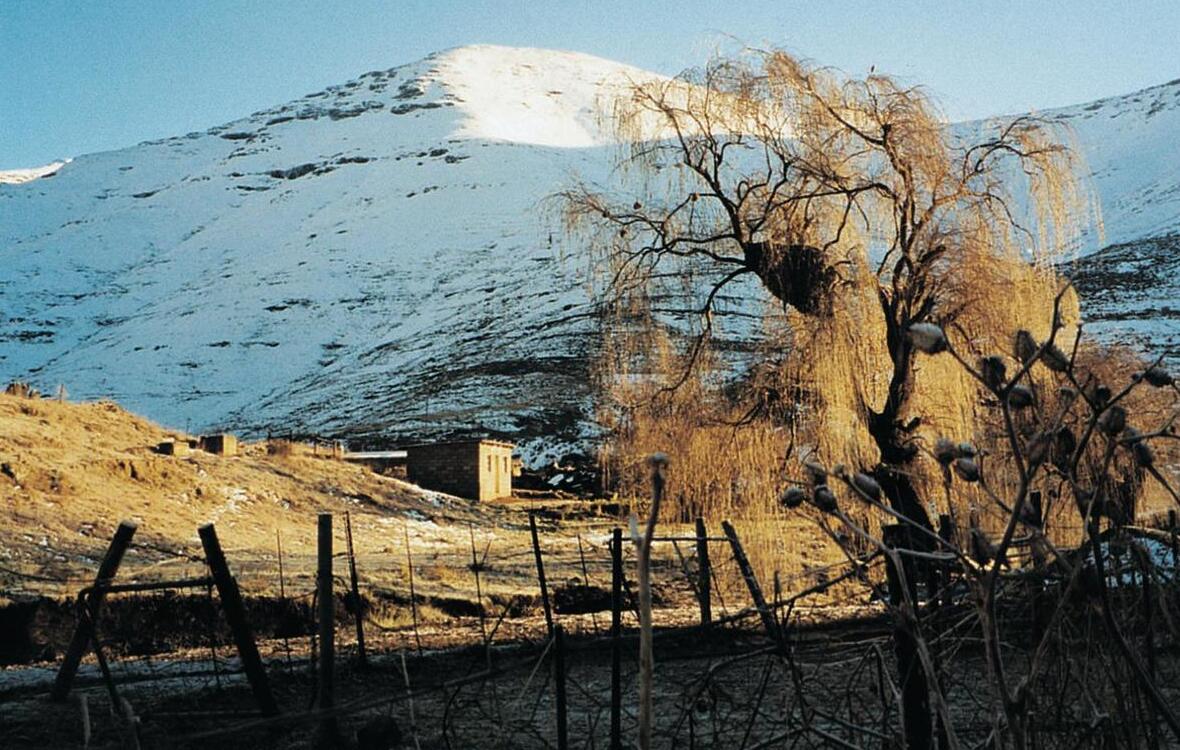Ethiopia Overview
Ethiopia is one of the oldest countries in the world, with a long and colorful history. As the only country in Africa, it managed to preserve its independence during the colonial era in the late 1800s.
| Capital: | Addis Ababa |
| Biggest city: | Addis Ababa |
| State: | Federal Republic |
| Language: | Amharic |
| Religion: | Christianity, Islam |
| Surface: | 1 127 127 km² |
| Population: | 89.2 million (2013) |
| Population density: | 76 residents per km² |
| Expectancy: | 55 years |
| Illiteracy: | 57% |
| Currency: | birr (ETB) 1 birr = 0.31 kr |
| GDP per capita: | $ 1,000 (2010) |
| Time difference: | +2 hours |
| Electricity: | 220 V AC, 50Hz |
| National Day: | 28 May |
| Country area code: | 251 |
| 2-Letter country abbreviation: | ET (See more abbreviations on Abbreviationfinder) |
| Business: | agriculture 80%, service sector 12%, industry 8% |
| Climate: | tropical in the lowlands, in the highlands more temperate; rainy season from April to September |

Ethiopia is located on the Horn of Africa in northeastern Africa and borders Djibouti, Eritrea, Kenya, Somalia and Sudan. The official language of Ethiopia is Amharic, but there are a total of 84 indigenous languages. Ethiopia is the second most populous country in Africa after Nigeria.
The Horn of Africa is considered to be the cradle of humanity. Several million years ago, the prehuman beings who later developed into homo sapiens lived here. In 1974, the skeleton of “Lucy”, who is estimated to have lived three million years ago, was found in northeastern Ethiopia.
In 1930, Haile Selassie was crowned emperor. In 1935 the country was invaded by Mussolini’s Italy, and a year later Addis Ababa was captured. Ethiopia merged with Italian Somaliland and Eritrea into Italian East Africa. Emperor Haile Selassie fled to Britain. In 1941, the British army defeated the Italians and Haile Selassie returned. The British decided that the borders that Ethiopia had before 1935 should be re-established, and Eritrea was separated. In 1962, Ethiopia invaded Eritrea, leading the Eritrean War of Independence that lasted until 1991. Under Haile Selassie’s regime, rural development was neglected. The gap grew between the poor rural population and those in power. These injustices ultimately led to the fall of Haile Selassie.
In 1974, Haile Selassie was deposed by a military coup, following strikes and peasant uprisings. A new revolutionary military group, the Dergen, took power in Ethiopia. Its ideology was Marxist and by 1975 all industry and cultivated land had been nationalized. Lieutenant Colonel Mengistu became dictator with the support of the Soviet Union and Cuba. Political repression and executions became commonplace in Ethiopia. Tens of thousands of opponents were killed or tortured, and the flow of refugees to the United States and Europe became large.
In 1984-85, Ethiopia was hit by a famine in which at least half a million people died. The disaster was caused by a combination of war, drought and Dergen’s socialist agricultural policy. Images of starving children spread around the world and received a huge response, for example through projects such as Band Aid. Dissatisfaction grew and the armed resistance movements gained increasing success. The Mengistu regime was overthrown in 1991 and Mengistu fled to Zimbabwe. The Revolutionary Democratic Front of the Ethiopian People (EPRDF) then seized power in Ethiopia with the support of the United States, and agreed to Eritrea’s independence. A transitional parliament was appointed by the EPRDF and Meles Zenawi was elected head of state. A new federal constitution was adopted in 1994 and in 1995 Ethiopia’s first democratic elections were held.
Ethiopia and Eritrea began close cooperation, with a common currency and duty-free treatment, after Eritrea became independent in 1993. However, when Eritrea chose to adopt its own currency in 1997, relations deteriorated drastically. Cross-border trade between the countries ended and border disputes arose. In May 1998, war broke out between Ethiopia and Eritrea, which lasted until December 2000. The war claimed many lives, wounded and refugees.
The capital of Ethiopia, Addis Ababa, is the diplomatic capital of the African continent. Both the African Union and the UN Economic Commission have their seats there. The modern city center is surrounded by widespread slums, where the majority of residents live in miserable conditions.
WORLD HERITAGE
The following objects in Ethiopia are listed as a UNESCO World Heritage Site.
The year in which the item was added to the list is indicated in parentheses.
- Simien National Park (1978)
- The Rock Churches of Lalibela (1978)
- Fasil Ghebbi, Gondar Regions (1979)
- Aksum, antiquities area (1980)
- Nedre Awashdalen (1980)
- Nedre Omodalen (1980)
- Relief-carved tomb monuments in Tiya (1980)
- The fortified city of Harer (2006)
- Konso’s cultural landscape, with paved terraced farms (2011)
ELECTRICAL OUTLET
Electricity and electrical outlets in Ethiopia
Voltage: 220 V
Frequency: 50 Hz
Type of plug: D, J, L
Need an adapter: No, you do not need an adapter.
CLIMATE AND WEATHER
Weather in Addis Ababa
| Climate | Jan | Feb | Mar | Apr | May | Jun | Christmas | Aug | Sep | Oct | Nov | Dec |
| Average temperature °C | 16 | 17 | 17 | 17 | 18 | 17 | 15 | 16 | 16 | 16 | 15 | 15 |
| Day °C | 20 | 21 | 22 | 21 | 22 | 20 | 18 | 18 | 18 | 20 | 20 | 20 |
| Night °C | 11 | 12 | 13 | 13 | 14 | 13 | 12 | 12 | 12 | 12 | 10 | 10 |
| Rain (mm) | 10 | 30 | 60 | 80 | 80 | 130 | 260 | 280 | 180 | 20 | 10 | 10 |

Addis Ababa
According to Countryaah, Addis Ababa is the capital of Ethiopia. It is located at 2,355 meters above sea level, and has 2.7 million residents (2007). The city is the seat of the African Union and has a large number of embassies due to the fact that in principle all aid to Africa is coordinated via the city.
The city was founded at the end of the 19th century by the emperor, who after the kingdom’s territorial expansion to the south wanted a more geographically central location of the capital in the country. The city was first called “Fin fine” but Emperor Haile changed the city’s name to Addis Ababa. The site was chosen because of the hot springs, which were considered sacred. The emperor had palaces and other monumental buildings erected with the help of foreign architects and builders. Architectural styles from Switzerland, India and Yemen were mixed and gave rise to a stone and wood architecture called the Addis Ababa style. The railway, which connects Addis Ababa with Djibouti, was built in the 1930s but opened 60 years later.
Aksum
Aksum is an ancient city in the Tigray region of northern Ethiopia. The city is a religious center and has 44,629 residents (2007).
The Aksumite Empire arose in the 100s BC. and extended not only over present-day northern Ethiopia, but also across neighboring areas of Eritrea, Sudan, and on the western side of the Red Sea, even across Yemen and the Saba on the Arabian Peninsula. For a time, the kingdom had undisputed dominance over the Red Sea. It was in lively contact with Arabia and India and with the Romans and was influenced by Greek civilization. The kings of Aksum had gold coins struck with Greek inscriptions, several of which were taken to Europe, and often had inscriptions engraved in the Greek language.
During the time of Aizane mentioned above, Frumentius preached Christianity in the land. Later, around the year 500, the kings of Aksum converted to Christianity. There are two inscriptions from Aksum written in Ethiopian script in the language geez. Both seem to be descended from the same king, but one is carved before he became a Christian, the other after he became a Christian. During the Middle Ages, Muslims from the kingdom of Adal southeast of Aksum made devastating incursions into the area, and finally, in 1535, Aksum was destroyed by the sultan of Adal. Some of the churches have recently been restored.
In 1980, the city was inscribed on the UNESCO World Heritage List.
Gondar
Gondar is the fourth largest city in Ethiopia and is located in the Amara region. The city is located in the northern part of the country, just north of Lake Tanasjön, and has 206,987 residents (2007).
Gondar was founded in 1635 and then served as the capital of Ethiopia until 1855. For a period in the 17th century, Gondar was one of the world’s most populous cities, with an estimated population of over 60,000 residents.
Harar
Harar is a city at the eastern end of the Ethiopian highlands, 1,885 meters above sea level, with 122,000 residents (2005). The ring wall around the city was built between the 13th and 16th centuries.
In 2006, the historic part of Harar was inscribed on the UNESCO World Heritage List.
Lalibela
Lalibela is a city in northern Ethiopia, and is one of the country’s holiest cities. The city has about 9,000 residents, and is known for the rock churches which are an archeological site within the city. The churches are carved directly from the rock and are therefore referred to as monolithic buildings. In addition to the church buildings, there are also a number of carved caves, tunnels, crypts and footpaths and through the area runs the artificial river Yordannos.
In 1978, the rock churches were inscribed on the UNESCO World Heritage List.


